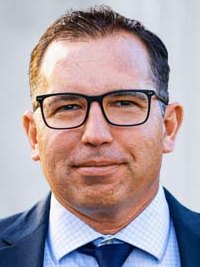 OPSC was the subject of an audit and the subsequent report should help school districts not only with funding, but with speedy delivery of construction approvals. EHA/MGT Director of Client Services Craig McAlpin summarizes the report and shows ways you can use this information to benefit your next facility project.
OPSC was the subject of an audit and the subsequent report should help school districts not only with funding, but with speedy delivery of construction approvals. EHA/MGT Director of Client Services Craig McAlpin summarizes the report and shows ways you can use this information to benefit your next facility project.
Recently, the office of the State Auditor was directed by the Joint Legislative Audit committee to conduct an audit of the Office of Public School Construction (OPSC) and three school districts. The focus of the audit was on the state’s facility program and ways for the program to improve. The report explained in detail the funding and administration of the program and provided two recommendations.
The first recommendation made in the report is that the “State Can Improve the School Facilities Program by Increasing Funding and Making Changes to Improve Equity.” The report estimates that the state will need $7.4 billion in funding for modernization projects in the next two to five years. Of the $7.4 billion, $1.7 billion is for requests that the Allocation Board cannot fund the and $5.7 billion is for additional project requests that the state is estimated to receive. The report bases their estimate of $5.7 billion based on the amount of funding that has been requested in the past and the amount of small, medium and large sized districts that could still request funding.
Another factor in the estimate of $7.5 billion is the funding that the Allocation Boards provides is not equitable to all districts and the Allocation Board should change their allocation process to improve equity to all districts in funding for modernization. Report shares details of the long wait times districts have had in waiting to receive their funding which is due to the first come, first served funding model. Many districts have waited years to receive the funding and, in some cases, the facilities program ran out of funds. The reports specific recommendation states:
1. To meet school districts’ anticipated requests for modernization funds, the Legislature should seek voter approval of at least $7.4 billion in bond authority for the modernization of school facilities.
2. To better ensure that the Allocation Board provides equitable funding for all districts that apply for modernization funds, the Legislature should require that the funds in future bond propositions be administered in the following manner:
a. Require the Allocation Board to prioritize funding to projects that fit at least one of the following criteria:
-
- Projects from districts meeting the financial hardship criteria.
- Projects from districts in low income areas.
- Projects that address an imminent threat to the health and safety of students.
b. Allow the Allocation Board to make preliminary apportionments to all districts requesting modernization funding that meet the financial hardship criteria.
3. To ensure that it receives information about future demands for modernization funding, the Legislature should require the Allocation Board to create estimates of future modernization funding requests and provide this information to the Legislature at least every other year beginning in fiscal year 2022–23.
4. To ensure the quality of estimates of future requests for modernization funding, the Legislature should require that the OPSC gather valid and reliable data about the age of all school facilities in California and that the Allocation Board’s estimates be based on this data. For example, the OPSC could survey a statistically significant number of school districts to gather data on the age of their school buildings. Further, the Legislature should require the Allocation Board to maintain any data the OPSC collects from districts for the purpose of building a comprehensive set of data on facility age for all California schools.
The second recommendation is “The State Should Continue Using Bond Funding to Assist Districts with Modernization Funds.” GO (General Obligation) Bond funding has been the States source for funding the modernization and construction of school facilities and similarly, a few other states use the same method to fund school facility maintenance. While it has proved to be a reasonable way to pay for modernization and construction, it is not always a guaranteed source of funding. In the past six years, even with the voter approved proposition that allowed the State to sell additional GO Bonds, there are at least 650 applications totaling $1.7 billion that will remain unfulfilled unless the Allocation Board receives additional bond authority. Even with the delays and uncertainties that GO Bond funding provides, the report shares that bond funding is still a better source of funding for financing school facilities than the funding that is provided from the annual State budget due to the economic cycles and fluctuations that the budget is built on.
The key points listed for recommendation #2 are:
- Bond funding does not provide a continually guaranteed source of funding, but it is a reasonable and common way to pay for infrastructure projects and remains the best option for California to fund school facility modernization on an ongoing basis.
- When state funding is unavailable or slow to reach school districts, they must rely on local funding to advance their projects. However, local funding is not always available or sufficient to cover districts’ modernization needs.
- State funding has generally encouraged greater equity in school facility modernization, with more state funding going to districts with lower assessed property value on average. Still, disparities exist between wealthy and financially challenged districts because of the amount of local funding that wealthy districts can access.

